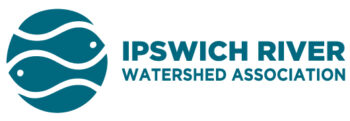RIVER HEALTH
How well is the river doing? Low flows, exacerbated by more frequent droughts have degraded aquatic life and habitat quality in the Ipswich River and broader region. The goal of the RiverWatch monitoring program is to track trends in river health on a monthly basis. Over 50 volunteers monitor 32 sites on the Ipswich River and major tributaries in the Ipswich watershed. More recently, we began coordinating efforts with the Parker River Clean Water Association (PRCWA) and Chebacco Lake and Watershed Association (CLWA) to monitor sites in the Parker and Essex watersheds. All 3 watersheds contribute to Plum Island Sound and the Great Marsh Ecosystem. Volunteers measure dissolved oxygen, water temperature, specific conductance and chloride. Monitoring of bacteria (E. coli), occurred in 2022 and 2023 and total phosphorus and chorophyll-a were both monitored at lake and pond sites in 2023. See the following Data Dashboard and River Health Index to explore water quality in this region.
The macroinvertebrate monitoring program is a volunteer monitoring program aimed at examining water quality in the Parker, Ipswich, and Essex watersheds through the collection and identification of benthic macroinvertebrates. Benthic macroinvertebrates (macros) are all those organisms that 1) are visible with the naked eye, 2) don't have a backbone, and 3) live at least part of their life cycle on the river bed. We collect macro samples at up to thirteen locations in the area and sort the specimens into their respective orders (ex. Trichoptera) and families (ex. Hydropsychidae). Different orders and families fulfill different roles within the river ecosystem and are more or less sensitive to pollution. Therefore, with data on the presence and relative abundance of macros in a given area, we can answer questions of river health as they arise due to low flows, drought, and pollution. This dashboard takes macro data from 2014 to the present and considers three such factors for assessing river health—EPT family richness, major biotic group index, and organism density per sample. It also considers the proportions of macroinvertebrate groups at each site location as they compare to the proportions of a model community. Clicking on the monitoring location ID in the data table pulls up this data at that site, including the percent impervious cover, and pans to the site location on the map.
Monitoring projects have been funded, in part, by the Massachusetts Department of Environmental Protection Water Quality Monitoring Grant Program, New England Biolabs Corporate Donations Committee, the Bruce J. Anderson Foundation, the Merrimack Conservation Partnership Science, Education and Outreach Grant Program and the Reading Cooperative Charitable Foundation. Special thanks to the many volunteers for their dedication and commitment to protect the waters of the Ipswich Parker and Essex River watersheds!
2022-2024 RiverWatch Data Dashboard
Data Dashboard: Water quality conditions are related to water quality standards or recommendations for aquatic life health or recreation (bacteria). Clicking on a site in the map or list will zoom into the location and change the chart on the left. use the arrows below the chart to see the different types. water quality measurements. Note that not all parameters are monitored at every site. -Created by Sarah Dawson
Macroinvertebrate Data Dashboard
Data Dashboard: The abundance and diversity of macroinvertebrates reflect long-term trends in water and habitat quality at a site. Different groups of macroinvertebrates (i.e. dragonflies, cadisflies, etc.) have know sensitivities to water and habitat quality that can be quantified into different metrics such as biotic index. Clicking on a site in the map or list will zoom into the location and change the charts on the left. use the arrows below the chart to see the different metrics. Note that not all sites are monitored consistently every year. -Created by Molly Stevens
